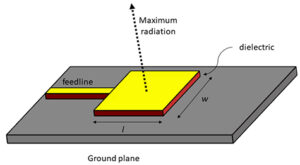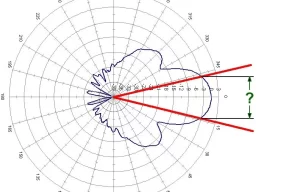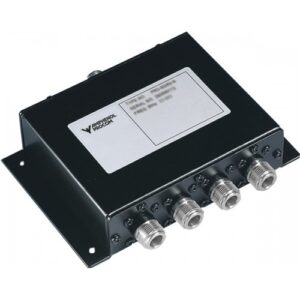Table of Contents
High Cost
Parabolic disk collectors are distinguished by high initial costs. For example, a single parabolic dish system may range from $10,000 to $20,000. A conventional solar panel array may provide comparable energy output but cost from $5,000 to $12,000, which is nearly half of the price. This difference in costs is because designing and producing the parabolic shape and the high-precision tracking mechanisms required for optimal alignment with the sun is very advanced engineering.
To address this issue, potential investors or consumers may investigate opportunities to subsidize the development of a collector through government grants or loans. As of 2021, U.S. federal and state incentives may account for up to 30% of total costs and decrease financial pressure.One can contribute to the community solar project and invest in one large-scale parabolic disk shared between multiple stakeholders.
While more costly, parabolic dishes offer better efficiency in terms of converting sunlight into energy. From this perspective, their high costs are justified, as they produce more electricity per unit of area occupied by the receiver, reaching more with sunlight. Apart from space, this efficiency also provides with a quicker return of the initial investment and savings in terms of high energy output. The comparison of data in the previous paragraph demonstrates that despite the double initial investment, power generation efficiency may equalize these values, thus rendering the parabolic dish an affordable investment.
Using proper materials that do not wear out due to high temperatures or environmental fatigue may extend the lifetime of a dish and ensure a swift return on investment even in cases of comparative inefficiency. Regular maintenance and updates to the tracking system can also assist, as they prevent drops in efficiency and provide high performance throughout the dish’s life. For those who might be interested in this technology, developing a detailed calculation of costs combined with the performance projection is a necessity. The calculations should provide information about the potential costs of repairs, efficiency drops over time, and utilization rates of the device at certain times of the year based on the local climate.
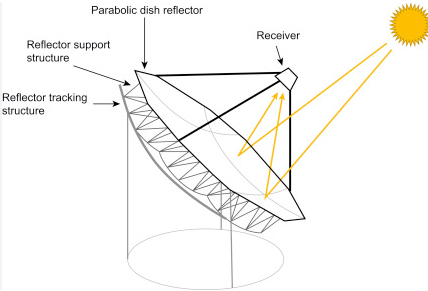
Complexity
The use of parabolic disk collectors requires complex mechanical systems and highly accurate engineering. It cannot be controlled manually – instead, it must be correctly oriented to the sun at all times. The problem is that they use the so-called “positioning systems” that move the dish based on the relative orientation of the sun and the dish. These systems use motors and sensors for adjustment, and if they lose accuracy, they will become inefficient. This leads to the conclusion that it will be challenging to operate the system compared to other, simpler systems that will only need to be correctly positioned when installed.
Handlers will have to be well-trained technicians to manage the complex mechanical systems. At the same time, because of the system’s complexity, maintenance time and cost will likely be higher. There are some solutions aimed at reducing the need for human intervention. For example, some manufacturers provide automatic software that can control the dish. The need for high system accuracy extends to manufacturing: due to the dish’s geometry, producing a parabolic shape requires extreme precision, and its failure can result in a less effective system.
Another system problem is that most of them are more expensive and somewhat complex than other systems. The choice will likely depend on the trade-off between the complexity and efficiency of producing energy. For example, imprinting a grill or a checkerboard on the surface of a regular square plate will reduce the amount of insolation that will evaporate the dish and reduce the efficiency of the plate.
Parabolic disk collectors will generally require technical support and will be prone to downtimes that will reduce the overall energy generating capability. Comparing those to other solar panels and collectors, such as flat plate solar collectors, they generally do not require the same type of human interventions. Overall, the choice will depend on the users’ ability to handle complexity versus the need for high power output and efficiency in sunny climates.
Space Requirements
Parabolic disk collectors are known for their high power output, although they require significantly more space per unit of energy generated than other solar technologies. Rather than being installed across a roof, each collector requires a significant area to protect the large dish, which may be a small number of meters for a small collector, but in most cases, it spans over 10 meters for a maximum power output and a large area.
This makes them less than ideal for any residential application where unused space is limited. However, to provide a contrast, an average rooftop might hold about 20 square meters worth of solar panels, while a single disk able to provide the same power output would use over 100 square meters of space situated on the ground. This means that even in a commercial situation, provided for by solar farms, the installation will require a vast area of land.
For the purpose of proper area usage, such devices are usually installed in places where they may double. In large commercial areas, parabolic disk collectors might be implemented in the form of overhangs on car parking rooftops, or as smaller overhangs around buildings to take advantage of an otherwise unusable space. In this case, these devices serve a dual purpose – they provide shade as well as generate power – without consuming any of the space that would, in most cases, be unused regardless.
Still, an evaluation should be made to ensure more not merely its current spacing, but also the potential expansion of the installation. Ahead of expanding the installation, companies must also secure a long term right to the surrounding are since space will be limited, and in case of zoning law expansion, an installations might reach a size limited by these laws.
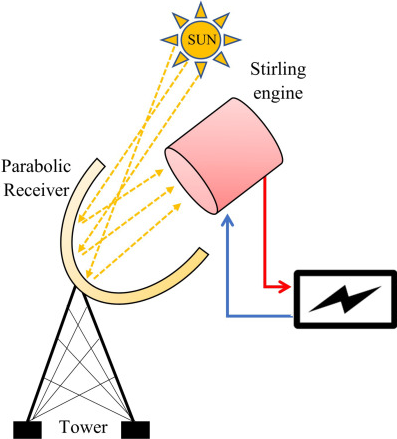
Heat Management
Parabolic disk collectors are designed to concentrate sunlight at a single focal point, and this ability allows them to gather an impressive amount of heat, with temperatures well exceeding 1,000 degrees Celsius. Unsurprisingly, managing this amount of heat is essential to keep the components of the system safe and the system itself operational in the long run. High temperatures are also known to negatively affect vast numbers of materials, and the disc, the internal structure, and the materials used for the energy conversion processes may soon degrade. From a practical standpoint, managing the heat would typically involve selecting appropriate and heat-resistant materials to cope with the temperatures.
For example, the focal point as per this type of collector is often made of advanced ceramics or ceramic-reinforced glass, which do not change form and remain functional even in extreme heat. It usually involves active cooling as well, especially in high power applications. These are often passive systems using fluids, such as oil, or water, managing the temperature by circulating around the heat-absorbing area of the system to take the heat away and dissipate it. Doing so not only preserves the equipment, but also helps the thermal conversion process overall by managing the temperature to keep it within a certain range. As complex heat management systems, these active cooling systems imply additional operational costs and some level of maintenance effort.
The cooling systems need to be maintained, and if they fail, then the temperature inside the device can reach sufficiently high levels to damage it. Ultimately, even in terms of materials, these heating systems are more costly due to the means of actively cooling the system to maintain its operational efficiency and its lifespan. For example, the use of advanced ceramics also refers to the use of special lubricants to keep the parts of the system cooled effectively to prevent wear and premature mechanical failure in the parts in question. It means that the costs of operating these parabolic disc collectors are greater as a result of the active cooling requirement, and the installation process also requires these complicated active cooling systems due to the high temperatures involved.
This, of course, affects both the installation costs and the added costs of maintenance, because while the passive systems do not fail particularly often, the consumption rates of the oil or the water are reasons for regular maintenance. While parabolic disk collectors are more efficient at converting energy when the light source is direct sunlight, making them more useful for places with enough sun, such as deserts, other concerns apply.
Both due to their relative inefficiency in terms of energy conversion when light must permeate the atmosphere to reach them or when the ambient temperature is high and water supply “scarce,” meaning that cooling per unit of power output is wasteful even if technically feasible. As material wear is another relevant shortcoming when it comes not only to disk collectors, but also to troughs. PV panels are also more affordable and reliable, especially for low-energy production in homes and small commercial users with neither the space nor the need for power production on this scale.
Weather Sensitivity
Parabolic disk collectors are especially sensitive to weather conditions. Their efficiency drops very sharply at partially clouded skies, let alone their performance is severely compromised under entirely overcast conditions. Therefore, solar industry professionals and decision-makers will only benefit from using these collectors if their climates are defined as ‘cool semi-dry’. For states in the American Southwest, where the sun shines nearly throughout the year, the use of parabolic disk collectors will be the most productive, contributing to the generation of a significantly higher amount of energy. However, for the Pacific Northwest, where the number of sunny days is significantly lower, the performance will be much improved, which makes parabolic disk collectors less dependable and cost-effective.
Furthermore, the large, round disks that parabolic dish collectors are defined by can potentially cause severe issues in settings where strong winds are characteristic. This could lead to the dish collectors losing alignment and, theoretkically, being ripped from the ground and thrown around by the wind. To address the concern, wind-load engineering can be implemented alongside the automatic stowing mechanism that would protect the dishes against being positioned by the wind: “To achieve prolonged tracking accuracy within 1.5°, each dish system design must take into account wind-load requirements”. As a result, the costs of development and maintenance in the areas in question will be substantial. The repair cost is another issue, as evidently, the dish collectors will suffer considerably in the conditions mentioned above and will require frequent repairs.
Photovoltaic panels, in turn, are less sensitive to the cut in the level of direct sunlight and can continue their generation of substantial amounts of electricity in the presence of some sunlight, as well as be more resilient to harsh weather. Therefore, the utility of using parabolic disk collectors in the designated environment can be justified only in combination with photovoltaic panels or photo accumulators that will ensure the stability of the supply of energy to customers. There is also a concern that may arise as a shortage in the number of sunny days in the area noted for the instability and wide range of weather conditions. As a result, the development of a solar project might not be cost-efficient and strategicially rational.
Limited Scalability
A parabolic disk collector is an efficient technology that can be used to gather solar energy. For instance, if several such dishes are installed in a specific area, they can power a small commercial facility or a residential area. However, there are several reasons why this technology is unsuitable for applications requiring more energy. Some of these characteristics have to do with the physical conditions required for the operation of these devices which include direct sunlight and precise alignment. At the same time, a large scale implementation of parabolic disk collectors will entail substantial costs associated with land and maintenance.
There are two important factors that inhibit the expansion of these devices. First of all, it can be seen that a large industrial site cannot be supplied with electrical energy generated by a single disk. More likely it would require more efficient solar panels to deliver electricity. In their turn, an extensive land area will be needed to install a greater number of such disks. Secondly, it should be kept in mind that each of these collectors requires a tracking system and they are individually operated.
It means that these devices ought to be precisely aligned in a row so that no item should lie in the shadow of the other. It can substantially diminish the overall efficiency and amount of collected energy. However, probably the most cost-prohibitive factor is that the maintenance of these dishes is rather expensive and it takes a long time to calibrate each of them. Therefore, in this case, the desired scalability level is also in question.
In this case, a more effective solution can be the integration of these devices with other renewable energy sources such as wind or water power. In this case, it will be possible to diversify the energy sources thus ensuring a more stable energy output.

